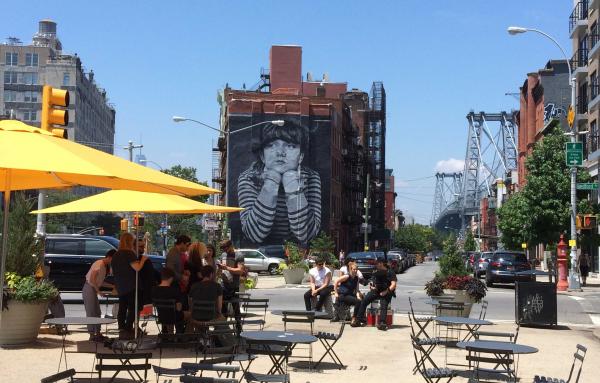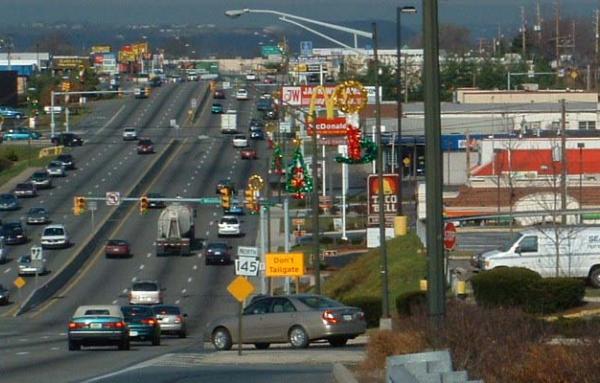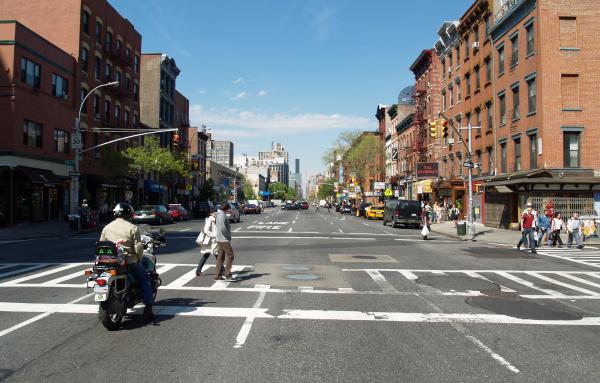What traffic engineers can learn from doctors
Professionals make mistakes. Doctors made a 100-year mistake called the radical mastectomy, based on an erroneous theory of how cancer spreads. But when studies proved this surgery unnecessary, doctors replaced the once-common procedure with a less damaging treatment in a surprisingly short period of time.
Some traffic engineering techniques are a bit like radical surgery. But unfortunately, traffic engineers as a group have been much slower to recognize their erroneous techniques and replace them with less damaging practices.
The crux of the issue is the failure of many traffic engineers to see that streets have many purposes, and must be designed to fulfill more than just the most vehicular-oriented objectives. Streets are the bones of communities; they give shape to neighborhoods. “Urban streets are places where people walk, shop, meet, and generally engage in the diverse array of social and recreational activities that, for many, are what makes urban living enjoyable,” writes Florida Atlantic University associate professor Eric Dumbaugh.
I recently explained that many of the critical uses of streets have been partly or wholly removed from the urban streets designed by traffic engineers. Walking, biking, transit use, and public life often all but vanish when traffic engineers impose a narrow view of what a street should accomplish.
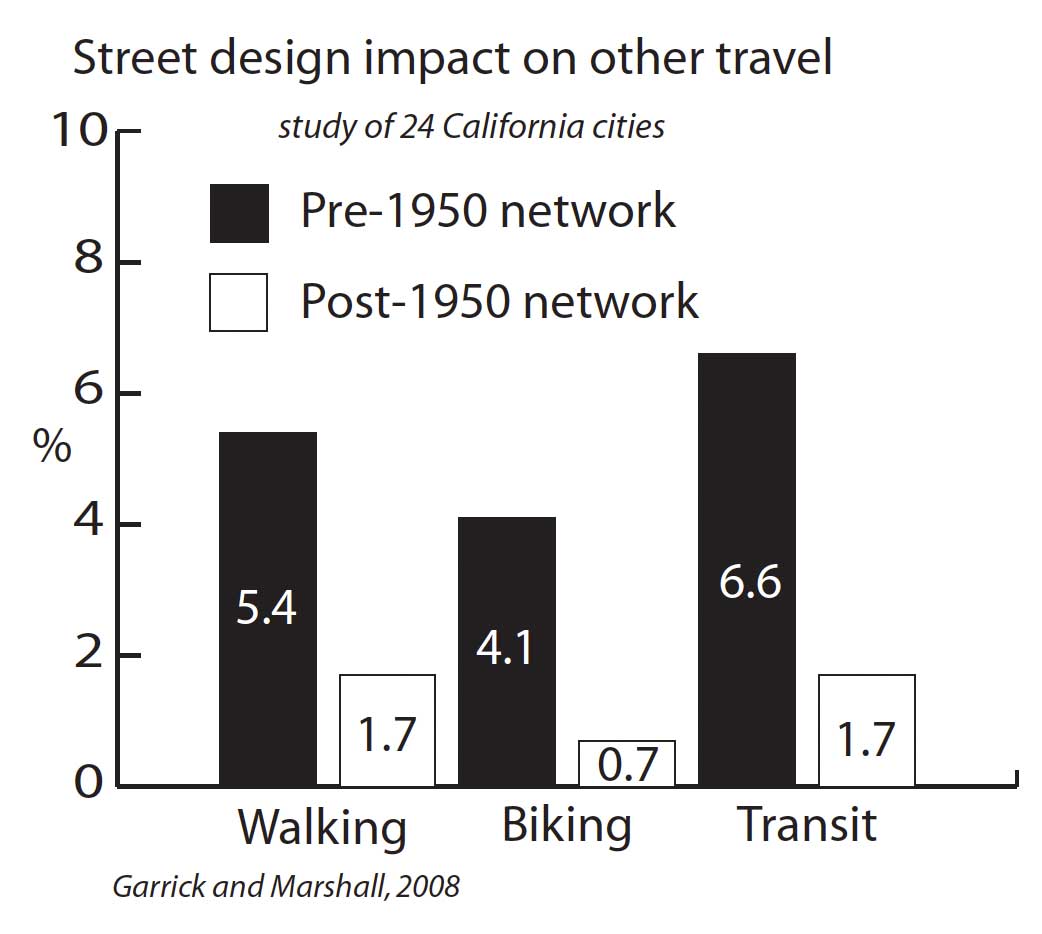
These losses can be thought of as side-effects of the attempt to make streets safe for moving vehicles and their occupants. Declining street life, furthermore, may lead to secondary side-effects—such as loss of businesses and property values. The traffic professionals have rarely explained the side-effects to the communities; often they have denied that any negative effects exist. For a darkly funny discussion of how this happens, see the brief video “Conversation With An Engineer,” by Strong Towns engineer Charles Marohn.
What’s tragic is that the surgery on streets often doesn’t work even for the purpose the engineers intended. Multiple studies have shown that streets became less safe by following modern design standards. To be clear, traffic engineers were not the only ones to blame. Local land-use regulations also substantially affect street networks and facilitate sprawl. Still, street design and configuration sets the framework for what kind of community is possible. Victor Dover, who runs an urban design firm that specializes in reforming local land-use regulations, reports that despite recent improvement transportation officials still pose barriers to healthy communities, from New York to Hawaii, from Texas to Tennessee—and in just about every state in which he works.
Doctors and traffic engineers actually have a lot in common. Their decisions significantly affect quality of life. They have life-and-death consequences. Street networks have been shown to exert an impact on health. Doctors, it’s worth noting, have some advantages. Their history goes back a lot further than that of traffic engineers. It was approximately two and a half millennia ago that Hippocrates set an ethical framework for the medical profession (“do no harm”). Doctors also benefit from the immediate and direct feedback that they get from their patients.
Transportation engineers, a modern profession, gained substantial power over the shape of communities beginning around the 1930s. This was part of a larger traffic safety movement, which coincided with transportation and land-use reforms that led to “urban renewal,” sprawl, and the system of collectors, arterials, and limited-access highways.
Given that traffic safety involves laws, enforcement, construction and design of roads, the redesign and technical advancement of automobiles, and campaigns against human activities like drunk driving, the feedback loop for transportation engineering techniques is complicated.
Dumbaugh describes how the tenets of street design were based on conjecture, not science. Like the radical mastectomy in medicine, traffic researchers for a long time did not look for evidence that their theories might be wrong. When the data did not fit what were considered at the time to be best practices, the findings were dismissed as aberrations.
Eventually, though, the contradictory data began to pile up. Meanwhile, new urbanists in the 1980s and 1990s ably explained the side-effects of modern traffic engineering, and proposed new models that addressed all of the facets of urban streets. If traffic engineering had been practiced more like medicine, the combination of data and proposed solutions would have resulted in a substantial soul-searching and in a reversal of common practice.
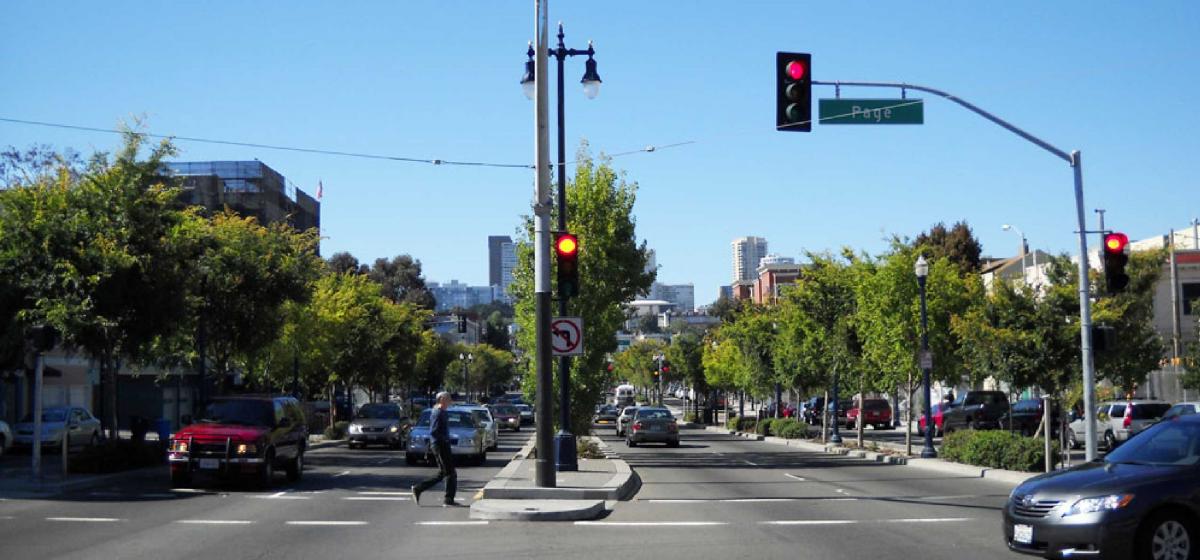
Yet that’s not what happened. Long after both the side-effects and inefficacy of modern traffic engineering were laid bare by the profession’s own studies, the old practices continued, with minor modifications. “Context-sensitive solutions (CSS)” was introduced in the early 2000s. It offered greater input from the community in theory—although residents were not always listened to or given the information they needed in order to provide helpful input. New urbanist traffic engineers sometimes joke that CSS means "meet with folks until they understand why the road needs to be wider with less access, or until they stop showing up."
The Complete Streets movement, starting in the middle of the last decade, emerged from smart growth advocacy—not from the engineering profession itself. As a result, some engineers have taken it seriously, but many others have simply added bike lanes, crosswalks, or sidewalks (in certain instances) to wide thoroughfares that continued to be dominated by the imperatives of motor vehicles.
Imagine if, after the radical mastectomy had been called seriously into question, surgeons continued to perform it. Imagine some doctors offering an alternative treatment as an option—while withholding relevant information from patients. Imagine people outside of the medical profession offering clear alternatives and then seeing the alternatives ignored, altered to render them less effective, or opposed outright. I think we can all agree that these responses would have been inadequate and irresponsible.
Traffic engineering can learn from medicine, which makes many mistakes but has set up a system of rigorous self-analysis and correction that can take effect relatively quickly once studies are complete. When data is found that does not fit the existing model, traffic engineers should aggressively question the model, change course without delay, and try to correct past mistakes more diligently than is currently the case.
Engineers can learn from doctors who understand and clearly explain side-effects and trade-offs. What if traffic engineers reported to the public prior to each road reconstruction or resurfacing project in a place that’s walkable or that is intended to be walkable? They could report that wider lanes, fewer connections, and elimination of on-street parking, to name three examples, may be detrimental to walking, biking, socializing, property values, and sidewalk dining. Engineers could explicitly lay out the pros and cons, and acknowledge that some of the engineering profession’s common techniques have been shown to have no benefit for safety. Such a shift would have a profound and immediate impact on streets, transportation, and the making of successful urban places.





